by bria4123 on March 6, 2012
Now there’s a fitting entrance to a trophy home.
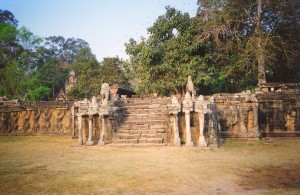
For the Khmers at Angkor, it was the ultimate trophy home, the royal palace. In its day, it was the largest palace in Southeast Asia. Approach those steps with respect! [click to continue…]
by bria4123 on March 6, 2012
I found the area around the Khmer royal palace at Angkor one of the best places to imagine life in the Khmer Empire during its zenith.
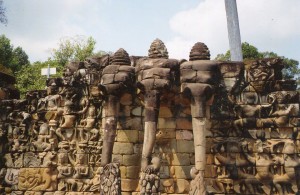
How did the people who built Angkor Wat live? You can get some tantalizing glimpses here. [click to continue…]
by bria4123 on March 5, 2012
Beijing’s Ritan Park offers repose in a modern neighborhood full of embassies.
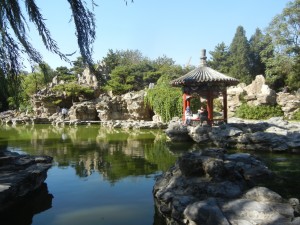
But it’s one of Beijing’s oldest parks, and it reflects a much older tradition that’s intertwined with China’s cultural and political history. [click to continue…]
by bria4123 on March 4, 2012
In China, I visited many religion’s places of worship. Most shared the same traditional Chinese features.
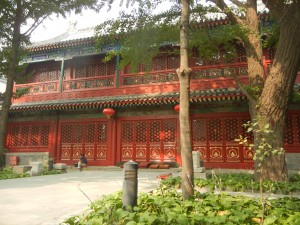
The first part of this series explores how they blend with Islam in China. In this final part, we’ll see how they permeate other religions, and why they’re so deeply rooted. [click to continue…]
by bria4123 on March 4, 2012
Traditional China’s religious imagination has been one of the world’s most creative. Daoists, Buddhists, Confucians and followers of folk religions cooked up more gods than Shanghai’s skyscrapers could hold.
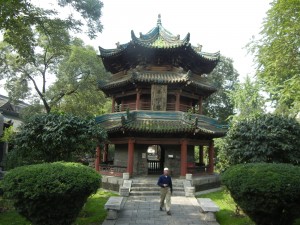
But China’s many faiths share a common Chinese sensibility. A very rich world-view permeates them. [click to continue…]
by bria4123 on March 3, 2012
Pardon me for publishing the same picture in two posts, but this vase has hidden meanings.
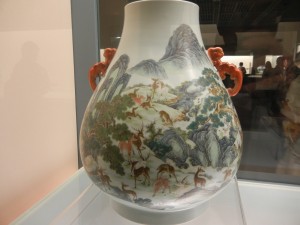
Actually, lots of Chinese paintings have hidden meanings. Many meanings come from features of the Mandarin language. So, we’ll take a closer look at this vase, and see some ways that Chinese language and thought have shaped each other. [click to continue…]
by bria4123 on March 3, 2012
To this day, scholars aren’t sure how ancient Egyptians raised obelisks. There are well-educated surmises though.
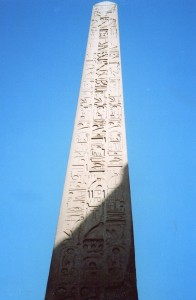
The most plausible ways required an enormous amount of effort, so obelisks had a lot of meaning for ancient Egyptians. Many Western cultures have also given them central importance. The Washington Monument is in the form of an obelisk. The obelisk is one of the West’s oldest monumental art forms, with some of the most continuity. So we’ll explore some of the most plausible ideas about its meaning and construction. [click to continue…]
by bria4123 on March 2, 2012
Many people in China consider the columns in Qufu’s Confucian temple’s main hall (the Palace of Great Establishment) to be the most beautiful in the world.
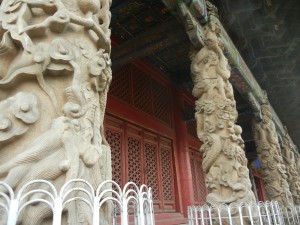
People admired them so much that they had to be covered with red silk when Emperor Qianlong visited so he wouldn’t lose face.
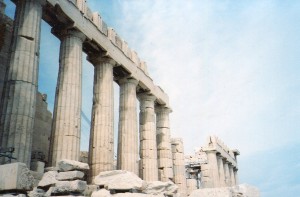
What a contrast with the Parthenon’s columns in Athens. The Parthenon is generally considered to be the most beautiful building from antiquity. Let’s examine these two cultures’ most honored way of treating this basic architectural element–each reflects one of the world’s most influential world-views. [click to continue…]
by bria4123 on March 1, 2012
Beijing’s thriving modern art scene converged in a big old ugly factory that East Germans built. Artists found it to be a cheap and private place where they could experiment with new ideas and forms. But like many other avant guard hubs around the world (Paris’ Montmartre, New York’s Greenwich Village, and San Francisco’s North Beach and Haight Ashbury), it became a popular tourist destination, and it gentrified.
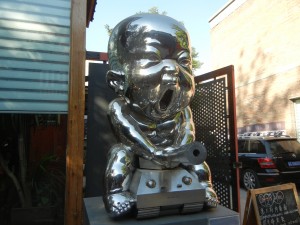
But its success allows it to be a haven for lots of creative souls. Though 798 features modern artists, many still follow some of China’s most hallowed traditions. [click to continue…]
by bria4123 on March 1, 2012
Many traditional cultures structure their thought around the 4 cardinal directions. Ancient China did too, but it added ideas to this perspective, and created a blend that’s uniquely Chinese.
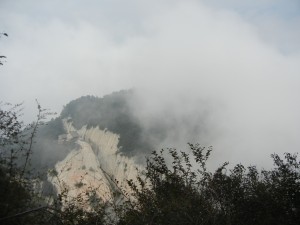
From the steaming Yangtze River to unearthly mountains (like Hua Shan, pictured above), China’s huge land inspired its ancients to add more ideas to the conceptual framework that they unified themselves with. These ideas are still very much alive. [click to continue…]











